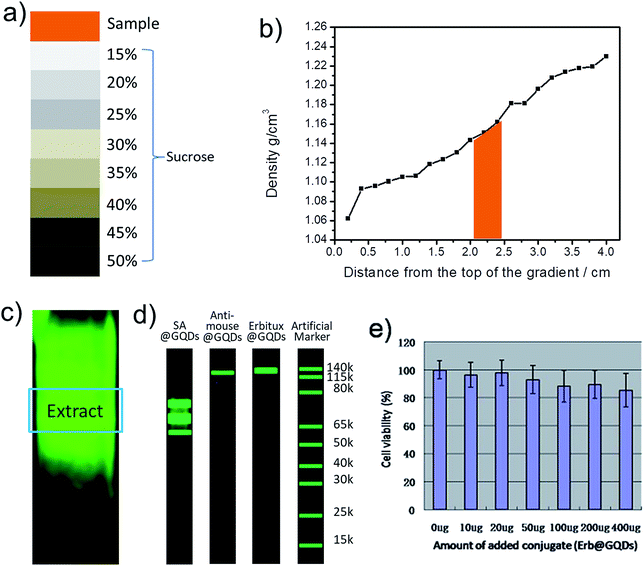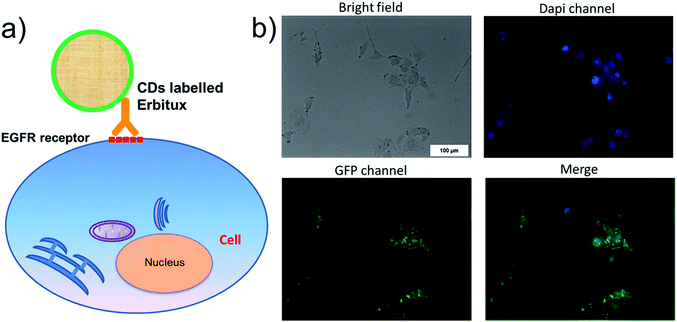 Open Access Article
Open Access ArticleCreative Commons Attribution 3.0 Unported Licence
DOI: 10.1039/C9RA90067E
(Correction)
RSC Adv., 2019, 9, 30888-30889
Correction: Bio-conjugation of graphene quantum dots for targeting imaging
Fei
Jia
*,
Shuyu
Lv
and
Sha
Xu
School of Chemical Engineering, Changchun University of Technology, Changchun, 130012, China. E-mail: jiafei19861112@163.com
Received
18th September 2019
, Accepted 18th September 2019
First published on 30th September 2019
Abstract
Correction for ‘Bio-conjugation of graphene quantum dots for targeting imaging’ by Fei Jia et al., RSC Adv., 2017, 7, 53532–53536.
The authors regret that the versions of Fig. 2 and 4 displayed in the original article were incorrect. The loading dye in Fig. 2c should be the artificial marker for molecular weight analysis. The original Fig. 4 did not support the EGFR binding due to the cell endocytosis, and the result has been revised with an improved data set. The correct versions of Fig. 2 and 4 are shown below.
The Royal Society of Chemistry apologises for these errors and any consequent inconvenience to authors and readers.
| This journal is © The Royal Society of Chemistry 2019 |


